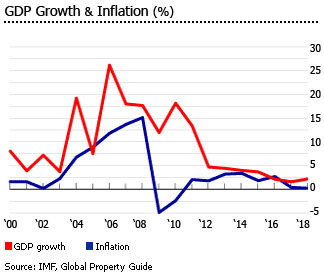Sept. 27 – The Global Financial Crisis of 2008 shell-shocked the global economy into a Great Recession. As the world is currently experiencing a similar crisis, we can reflect on the troubling times of past to see how countries may respond this time around.
Mandy Clark of VOA wrote about the result of the Great Recession of 2008 in Dubai, the United Arab Emirates’ largest city, a year following the initial event. Clark shares that the United Arab Emirates is home to many foreign workers, and as was the trend at the time, a great number of these workers lost their jobs. For some, they returned home, primarily to South Asia. But for a troubling number of workers, their employers were able to hold on to their passports. Thus a lot of foreign workers, who exist in an impactful amount of Dubai and the United Arab Emirates’ economies, were left in a foreign country with no source of income.
Some organizations did step up during these times for the United Arab Emirates. As Clark shares, some work advocacy groups, like the United Nations International Labor Organization, pushed for better protection of foreign workers, including ending the holding of foreign workers’ passports. Similarly, the United Arab Emirates’ government stepped up to the plate to issue some of their austerity measures. Clark said $582 billion in construction programs was put on hold, the United Arab Emirates offered a $10 billion bailout, and Dubai enacted a $20 billion sovereign bond program.
Amalu Joseph’s analysis of the Dubai Recession also discusses these policies. As would be expected, Joseph shares that the government guarantee created huge debt when investors demanded their return. However, Joseph concludes that the United Arab Emirates actually did well in stabilizing their economy by preserving the liquidity of the economy and preventing the real estate market from going down with the banks. Joseph does discuss one instance of a structural adjustment program, as there were capital injections responsible for larger banks taking over weaker banks. While immigrant workers suffered in the short term, it would appear that the United Arab Emirates’ economy rebounded well.

On the other hand, there is not much to find about Qatar during the Great Recession of 2008. This is because Qatar was hardly exposed to the financial crisis. The Oxford Business Group’s 2008 Year in Review shows that if anything, Qatar’s economy grew during this time. According to this review, Qatar’s Gross Domestic Product rose by 19% in 2008 and 16.5% in 2009. While down from 30% in 2006, the important figure is that Qatar’s economy was still on a considerable rise when the rest of the world was shaken. As the figure above would indicate, Qatar’s growth did slow down around 2012. However, from my research, this does not appear to be caused by the Global Financial Crisis.
The Oxford Business Group believes Qatar was able to avoid an economic fallout due to their high energy income and ginormous government reserves. Daily News Egypt, sharing another Oxford Business Group article, also considers that Qatar was not really affected due to the country’s degree of caution in their investments. Qatar is able to maintain their own liquidity while cautiously monitoring market situations before investing.
With this being said, the people of Qatar were not significantly affected. Returning to the Oxford Business Group, it would appear no austerity measures had to be inserted, as Qatar managed to save smart enough in order to not have to rely on bonds. Likewise, it does not seem Qatar was forced to implement any structural adjustment programs, although some programs were created nonetheless. Qatar implemented a program to increase gas and oil production, and businesses were able to expand their clientele and managed to sign some long-term contracts with European nations. Additionally, Qatar’s Investment Authority did offer to buy up to 20% of any struggling bank’s capital, as part of a program to increase liquidity in their banking sector.

Overall, the United Arab Emirates and Qatar responded well to the Global Financial Crisis of 2008 and the following Great Recession. The United Arab Emirates was able to bounce back from some limited economic turmoil, and Qatar managed to continue growing throughout this time. Hopefully, these countries, along with the rest of the world, are able to replicate this success when all is said and done about our current predicament.
References
Clark, M. (2009, November 2). “Global Economic Crisis Hits Dubai.” Voice of America. http://www.voanews.com/archive/global-economic-crisis-hits-dubai
Joseph, A. (2019, March 1). “Analysis of the Dubai Recession 2008.” IndianFolk. http://www.indianfolk.com/analysis-dubai-recession-2008-edited-anu-vensila/
“Qatar Underexposed to US Financial Crisis.” (2008, October 2). Daily News Egypt. dailynewsegypt.com/2008/10/02/qatar-underexposed-to-us-financial-crisis/
“2008 Year in Review.” (2015, September 21). Oxford Business Group. oxfordbusinessgroup.com/news/2008-year-review-12